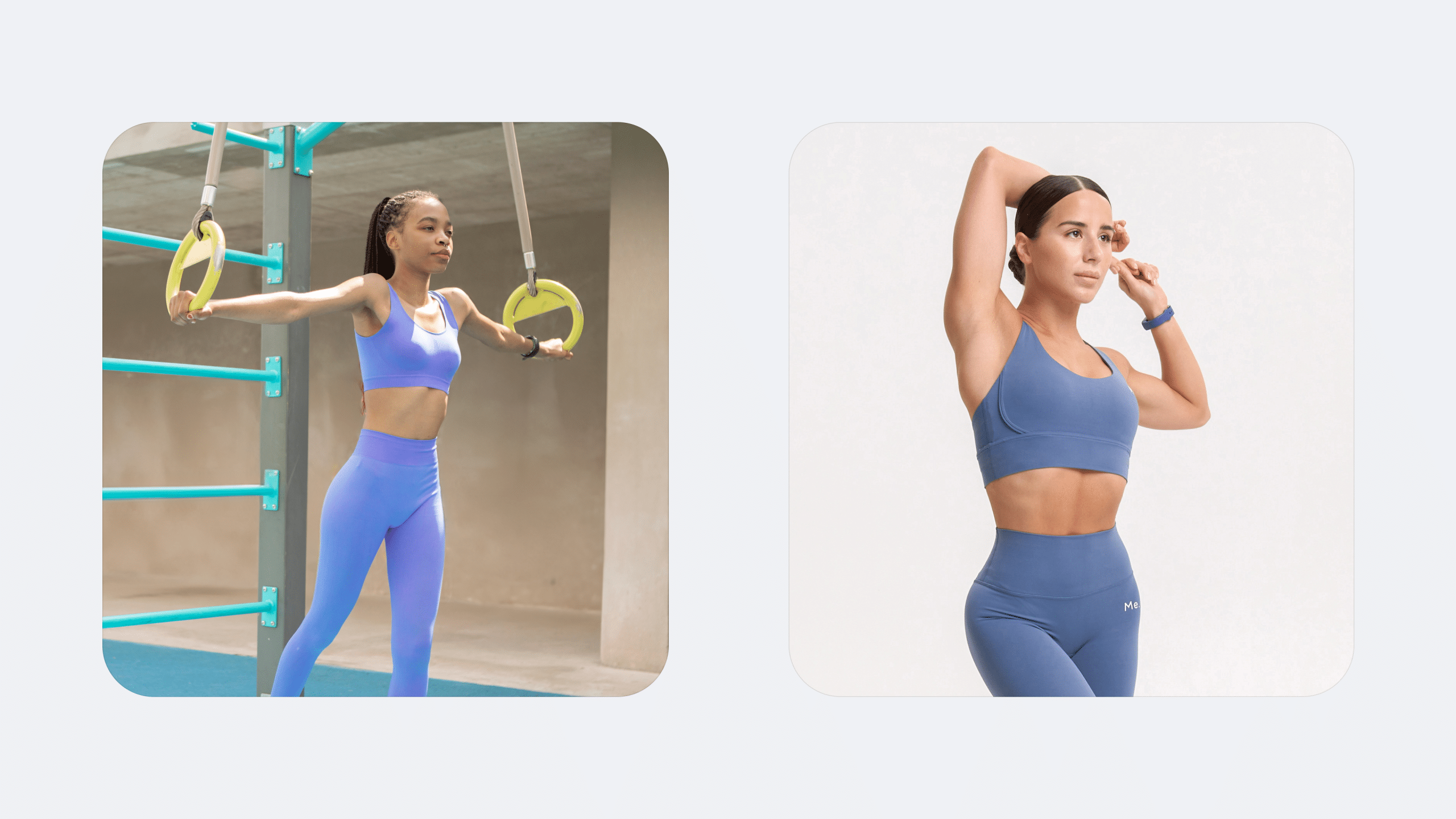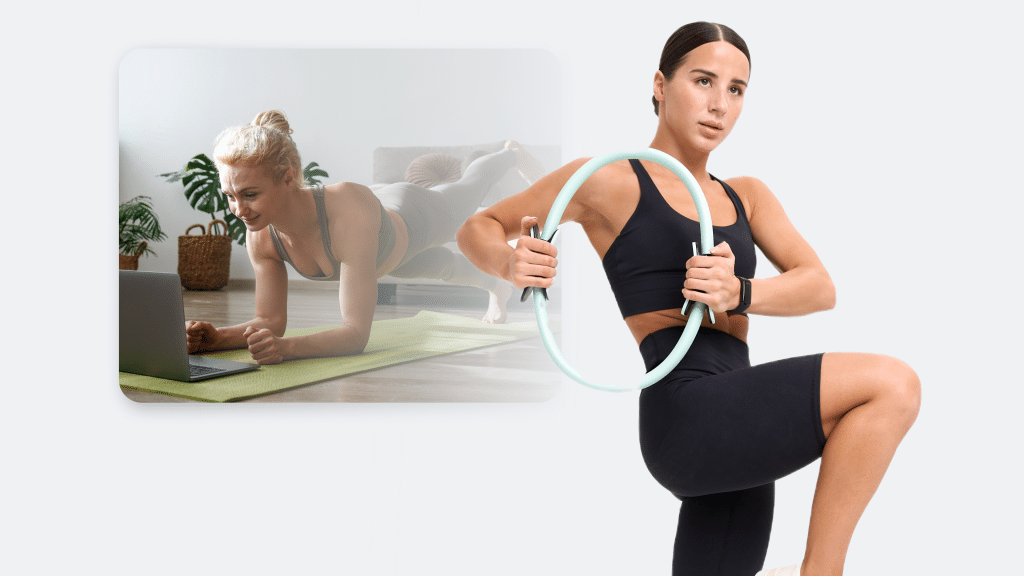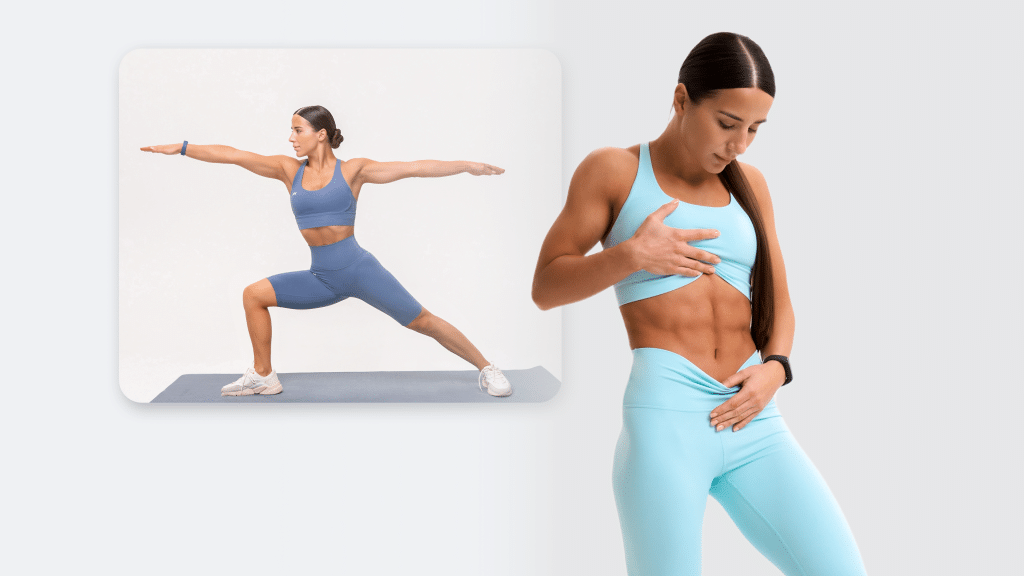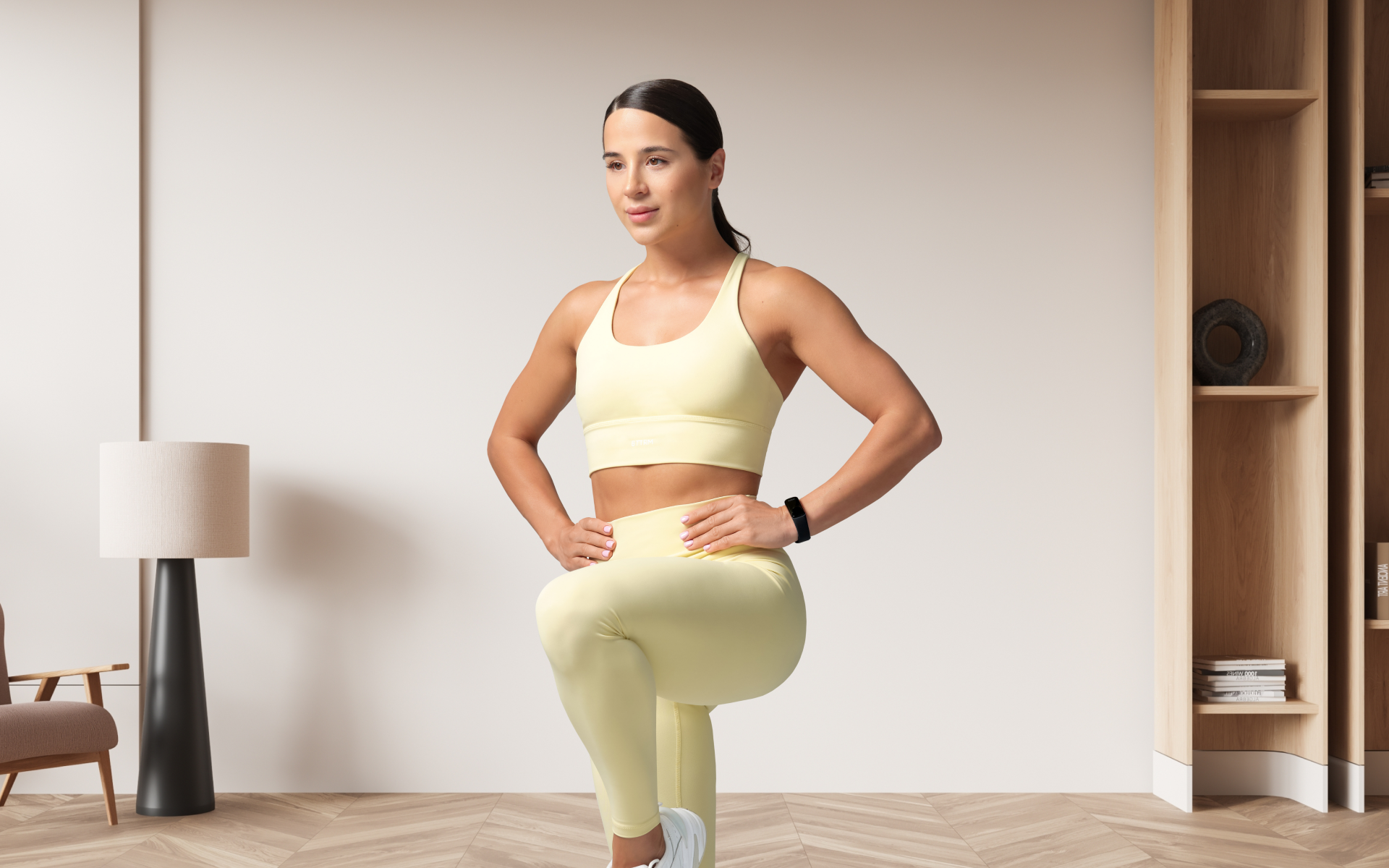Are you looking for a way to level up your fitness without fancy gym equipment?
Calisthenics might be the answer you’ve been looking for. This form of exercise uses only body weight for resistance, so it’s doable for anyone at any fitness level.
Get the power of functional movements that build strength, flexibility, endurance, and coordination. The ultimate calisthenics split is a customized workout schedule that hits different muscle groups, giving you a full-body workout.
Whether you’re a beginner starting your fitness journey or an athlete looking for a new challenge, the calisthenics split will transform your body while keeping you engaged and motivated.
Here, we’re going to break down calisthenic splits. We’ll learn what they are, how to get started, and some safety and prevention tips to get the most out of this workout without getting injured.
What is the Best Calisthenics Split?
There are 5 commonly used calisthenics splits, and neither is better because the best one for you will align with your goals and lifestyle.
5 Calisthenics Workout Splits:
- Full Body Calisthenics Split: targets all major muscle groups in a single workout session.
- Upper Lower Split: divides the body into upper and lower sections, each training on separate days.
- Push Pull Split: focuses on pushing (chest, triceps) and pulling (back, biceps) movements on alternating days.
- Push Pull Legs Split: similar to the Push Pull Split, but with an additional leg day.
- Body Part Split: dedicates specific days to train individual muscle groups (chest day, back day, leg day, etc.)
Effects of calisthenics splits
When you do split training, you target specific muscle groups on particular days to focus on the muscle and achieve better recovery.
For example, a typical push-pull-legs (PPL) split will dedicate:
- One day to push exercises like push-ups and dips.
- Another day to pull exercises like pull-ups and rows.
- A final day to lower body movements like squats and lunges.
These splits can repeat twice a week with 1 to 2 rest days.
You can do back-to-back workout days or schedule your rest days between workout days.
For example, in the 3 day calisthenics split, you could train on Monday, Wednesday, and Friday, with the rest days in between.
However, you get to choose the schedule and variation that is right for you (1.)
The BetterMe: Health Coaching app will provide you with a host of fat-frying fitness routines that’ll scare the extra pounds away and turn your body into a masterpiece! Get your life moving in the right direction with BetterMe!
This targeted approach ensures each muscle group receives enough attention and minimizes overtraining.
One of the many benefits of calisthenics splits is that it targets multiple muscle groups:
- Chest
- Back
- Legs
- Core
You can build strength, muscular endurance, and overall functionality by isolating these muscle groups.
Scientific studies have shown that targeted muscle training leads to better hypertrophy (muscle growth) and strength gains compared to random full-body workouts (2).
Also, the split routine method helps your nervous system adapt to a higher workload over time. Regular calisthenics training improves your body’s neuromuscular coordination, and you get more efficient and effective workouts (3.). So, you build muscle and overall body performance and capability.
Read more: Calisthenics Calories Burned: Your Ultimate Guide
What’s a Good Split for Calisthenics?
Starting your calisthenics split routine doesn’t have to be scary. First, warm up with dynamic stretches and light cardio to get your blood flowing and muscles ready. A 5-minute jog followed by arm circles, leg swings, and torso twists can do the trick.
Now, focus on basic split exercises. For beginners, you can try the 3-day calisthenics split targeting different muscle groups daily.
Calisthenics Split Sample Plan
Here’s a sample plan to get you started:
- Day 1 – Push Day: Push-ups, dips, shoulder presses.
- Day 2 – Pull Day: Pull-ups, inverted rows, bicep curls.
- Day 3 – Leg Day: Squats, lunges, calf raises.
If you want a more advanced routine, you can do a 5 day calisthenics workout split.
5-Day Calisthenics Split Sample Plan
Here’s one you can do:
- Day 1: Push (chest, shoulders, triceps)
- Day 2: Pull (back, biceps)
- Day 3: Legs (quads, hamstrings, calves)
- Day 4: Core and Cardio
- Day 5: Full Body or Skill Work
This balanced approach targets all muscle groups and gives you enough recovery time.
Now, keep in mind that consistency is vital. Be sure to maintain proper form to avoid injuries and get the most out of them. Start with lower sets and increase as you get more comfortable and stronger. Remember, progress is not perfection on the first day.
Check out our other article here if you want another bodyweight workout plan.
Progressing Your Calisthenics Split Routine
Once you have the basics, you must progress to avoid plateaus. Gradually introduce more challenging exercises like handstand push-ups, muscle-ups, and pistol squats. These advanced movements will keep your workouts dynamic and your muscles constantly challenged.
Another way to progress is by modifying your rep schemes and sets.
For example, switch from 3 sets of 10 reps to 5 sets of 8 reps or try supersets and circuits to increase intensity.
Progressive overload is critical; continually challenging your muscles with heavier loads, more reps, or more complex movements.
And, always make sure you listen to your body. If you feel stuck or plateaued, it’s time to switch it up. Introduce new exercises, change your split days, or even take a rest week to allow your muscles to fully recover and come back stronger.
Should I Train Full Body or Split Calisthenics?
Full body and split have benefits, but a split routine is often more effective for targeted muscle growth and recovery. Full-body workouts are suitable for beginners or those with limited time but can lead to overtraining if not appropriately managed.
Split routines allow for focused and intense training on specific muscle groups and give you enough time to recover. This type of calisthenics is good for intermediate to advanced fitness enthusiasts who want to gain significant muscle hypertrophy and strength.
However, when looking at a study completed in 2021, sixty-seven untrained subjects were randomized into one of two groups: split workout routine and full-body workout routine. Both groups performed 8 to 12 reps maximum per set, with 60 seconds of rest between sets. Researchers assessed maximal strength and muscle thickness after eight weeks of training.
The results:
- Both training strategies are equally effective in enhancing muscular adaptation in untrained individuals.
- These findings are relevant to the early phase of resistance training (eight weeks) (4.)
Is Push-Pull-Legs (PPL) Split Good for Calisthenics?
The Push-Pull-Legs (PPL) split is excellent for calisthenics. It gives you a structured way to work on different muscle groups without overwhelming any part of your body. Each workout targets specific movements, so you get balanced muscle development and less chance of injury.
Since PPL splits are simple and easy to follow, they suit beginners and advanced athletes. They also allow you to adjust the intensity and volume based on your fitness level and goals.
Read more: Benefits Of Calisthenics: How Weight-Free Exercising Can Help You Lose Weight
Is Calisthenics 3 Times a Week Enough?
Yes, performing calisthenics 3 times a week is effective, especially for beginners and those who just want to stay active without over-committing. This frequency allows for a balanced approach to building strength and endurance, giving the body enough time to recover and adapt.
It also means each workout can be structured to target different muscle groups or skills so you have a comprehensive training routine without constant intense physical stress.
Consistency is vital. So, having a reasonable schedule helps build exercise habits and long-term fitness results.
For intermediate to advanced levels, progressing to more challenging exercises or adding more sessions can enhance results.
However, your primary focus should be quality over quantity.
The 3 times a week schedule creates a good foundation for most fitness enthusiasts wanting to build and maintain strength through calisthenics.
What is the Best Bodyweight Split?
Your best bodyweight split will depend on your goals, schedule, and fitness level. When you know why you want to do bodyweight only, then you can plan around your reasonings.
- Do you not have access to gym equipment?
- Or do you want to try something different?
Get clear on your “Why,” and then decide how many days a week you would like to work out and where you will do it.
A mix of push, pull, and leg exercises throughout the week is good for overall fitness.
An example of a good split is:
4 Day Bodyweight Split:
- Day 1: Upper Body Push
- Day 2: Upper Body Pull
- Day 3: Lower Body
- Day 4: Core and Functional Movements
This split hits all major muscle groups, benefiting your strength and endurance.
For more muscle gain results, check out our other article on the best workout split for muscle gain.
Whether you’re a workout beast or just a beginner making your first foray into the world of fitness and dieting – BetterMe has a lot to offer to both newbies and experts! Install the app and experience the versatility first-hand!
Safety and Injury Prevention
Calisthenics splits are intense, so safety is essential.
Always warm up before workouts to prepare your muscles and joints. Dynamic stretches, light cardio, and gradual progression into your exercises can prevent injuries.
Focus on proper form and technique over the number of reps. Using the correct form minimizes stress on your joints and maximizes muscle engagement. If you need help with your form, consider working with a coach or using online resources for guidance.
Listen to your body. If you feel pain (not to be confused with the normal discomfort of a challenging workout), stop exercising and consult a doctor. Rest and recovery are just as important as the workouts themselves.
Other Things To Consider To Get The Best Results
Creating a bodyweight training routine is more than just following a split; it’s also about:
- Progression
- Variation
- Recovery
Add progressive overload to your workouts to improve and avoid plateaus by:
- Increasing the number of reps
- Adding variations to the exercises
- Decreasing rest time between sets
Variety keeps you engaged and challenges your body in new ways.
As you advance, consider adding exercises like:
- Pistol squats
- Muscle-ups
- Handstand push-ups
Also, adding aerobic workouts like running or cycling can improve cardiovascular endurance and complement the strength gains from your bodyweight routine.
Recovery is a requirement for your progress
Ensure you give your body enough rest between intense sessions, and don’t underestimate the importance of sleep in muscle repair and growth.
When your body sends you these signals, let it be a warning to prioritize your muscle recovery:
- Irritability
- Decreased performance
- Increased heart rate or blood pressure
- Weight loss
- Nausea
- Reduced appetite or loss of appetite
- Insomnia
- Low motivation
- Muscle soreness (5.)
Focus on nutrition
Fuel your body with a balanced diet with proteins, complex carbs, and healthy fats.
Set goals and track progress
This form of accountability helps with motivation and direction. Whether it’s mastering a new exercise or improving on existing ones, having specific goals will be your benchmarks.
Join communities
Local or online, for support, accountability, and inspiration. These connections can bring new information, guidance, and shared experiences to your calisthenics practice.
By focusing on these holistic elements, you can create a sustainable bodyweight training program that goes beyond the basics of a split routine.
Yes, 20 minutes of calisthenics can be enough, especially for high-intensity workouts. Focus on compound exercises that work multiple muscle groups to get the most out of your workout. Yes! Calisthenics can help you build muscle and lose body fat to get ripped. Consistency, progressive overload, and proper nutrition are key. Yes, overtraining can lead to injuries and burnout. Schedule your rest days into your routine and listen to your body to avoid overtraining. For beginners, 2 sets per exercise can be a good start. But as you advance, increase the number of sets and reps to keep challenging your muscles.Frequently Asked Questions
Is 20 minutes of calisthenics enough?
Can you get ripped with calisthenics?
Can you overdo calisthenics?
Is 2 sets enough calisthenics?
The Bottom Line
Calisthenics is a great way to improve strength and muscle tone. But optimal fitness is more than just one form of exercise.
Adding cardiovascular and flexibility exercises and paying attention to nutrition creates a more holistic approach to long-term health and wellness.
Comprehensive fitness improves physical endurance, mental toughness, and overall life quality.
Remember, it’s all about balance; you can have a sustainable fitness journey by combining these. Listen to your body and make conscious choices so your active lifestyle remains a source of energy, wellness, and fun.
DISCLAIMER:
This article is intended for general informational purposes only and does not serve to address individual circumstances. It is not a substitute for professional advice or help and should not be relied on for making any kind of decision-making. Any action taken as a direct or indirect result of the information in this article is entirely at your own risk and is your sole responsibility.
BetterMe, its content staff, and its medical advisors accept no responsibility for inaccuracies, errors, misstatements, inconsistencies, or omissions and specifically disclaim any liability, loss or risk, personal, professional or otherwise, which may be incurred as a consequence, directly or indirectly, of the use and/or application of any content.
You should always seek the advice of your physician or other qualified health provider with any questions you may have regarding a medical condition or your specific situation. Never disregard professional medical advice or delay seeking it because of BetterMe content. If you suspect or think you may have a medical emergency, call your doctor.
SOURCES:
- 5 Best Calisthenics Splits to Make Your Workout Efficient (calisthenicsworldwide.com, 2023)
- Maximizing Muscle Hypertrophy: A Systematic Review of Advanced Resistance Training Techniques and Methods. (pubmed, 2019)
- Brain Endurance Training Improves Dynamic Calisthenic Exercise and Benefits Novel Exercise and Cognitive Performance: Evidence of Performance Enhancement and Near Transfer of Training. (pubmed, 2024)
- Split or full-body workout routine: which is best to increase muscle strength and hypertrophy? (pubmed, 2020)
- Maximizing Muscle Recovery: 14 Proven Strategies (well.org, 2023)











